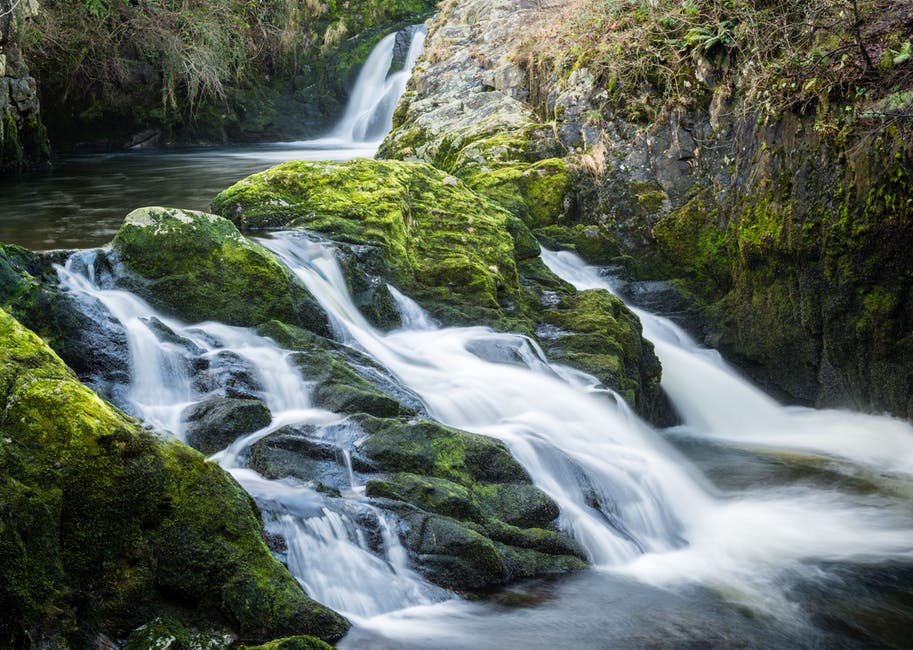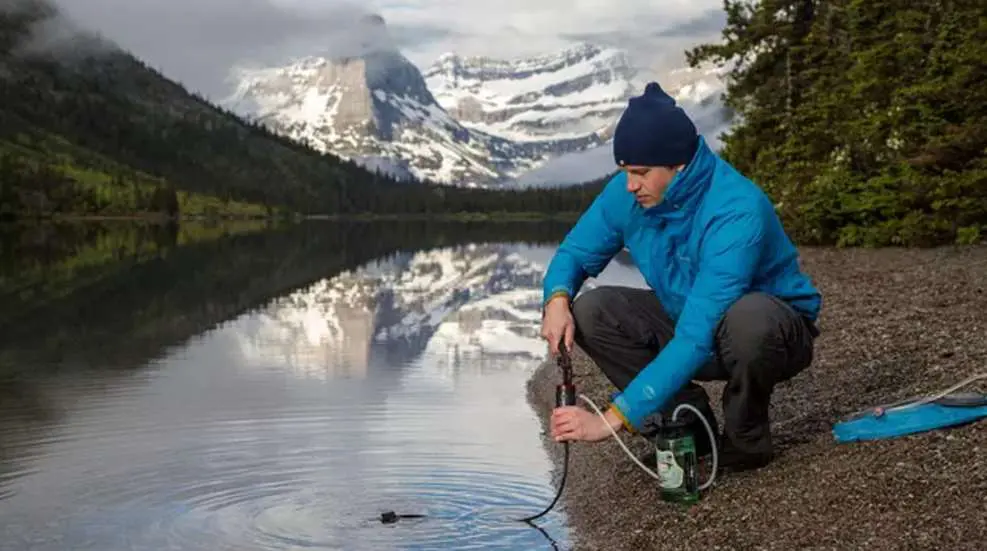

Finding clean water in the backcountry is crucial for staying hydrated and healthy during outdoor adventures. A lack of access to safe drinking water can quickly turn a pleasant outing into a dangerous situation. This comprehensive guide will delve into the challenges and solutions for acquiring clean water in remote environments. We’ll explore strategies for identifying reliable water sources, effective purification techniques, and essential safety precautions. This comprehensive article will also equip you with the practical knowledge to stay hydrated and healthy while enjoying the backcountry.
The Importance of Clean Water in the Outdoors
Water as a Vital Resource
Clean water is essential for human survival. Dehydration can quickly lead to serious health problems, especially during strenuous outdoor activities. In the backcountry, accessing clean water sources can be challenging, making proactive planning critical for a safe and enjoyable experience. Reliable water sources and efficient purification techniques are crucial. Many people underestimate the dangers of contaminated water, and this often leads to unexpected health issues. This article will discuss how to avoid such problems and focus on safe water consumption practices.
Identifying Risks and Prevention
The primary risk is contamination from various sources including bacteria, viruses, and parasites. Natural water sources like streams and springs can be easily contaminated by animal waste, runoff from agricultural fields, or even human negligence. Many campers underestimate the dangers of these sources and don’t take necessary precautions. Therefore, practicing proper water treatment procedures is imperative to prevent illnesses. This article will outline effective purification methods to protect your health.
Effective Purification Techniques
Proper water treatment is paramount. Boiling water is a simple yet effective method that kills most harmful microorganisms. However, this method isn’t always suitable for all situations. Other options include chemical tablets, which chemically neutralize contaminants, and water filters, which physically remove impurities. The best choice depends on individual needs and circumstances.
Essential Water-Finding Strategies
Locating Reliable Water Sources
Identifying reliable water sources is a crucial aspect of backcountry preparedness. Thorough pre-trip research is essential. Consult topographical maps and other resources to identify potential water sources like streams, springs, or snowmelt areas. Observing animal trails, vegetation patterns, and any visible signs of water activity are crucial clues for finding reliable water sources.
Water Purification Techniques
Boiling Water
Boiling water is a fundamental method for purifying water. Bring the water to a rolling boil for at least one minute to eliminate most harmful pathogens. Ensure the water reaches a full boil for adequate disinfection, particularly in higher elevations where water boils at lower temperatures. This technique is a proven method for quickly and efficiently ensuring safe drinking water.
Water Purification Tablets
Water purification tablets are convenient for purifying water quickly. These tablets contain chemicals that neutralize bacteria, viruses, and parasites. Follow the manufacturer’s instructions for dosage and contact time carefully, as incorrect use can compromise effectiveness. These tablets provide a readily available method for purifying water in a variety of situations.
Water Filters
Water filters offer a long-term solution to water purification. They physically remove impurities like sediment, bacteria, and parasites. Various types exist, ranging from simple filter straws to more robust pump filters. For extended trips, a filter that can efficiently filter water without having to boil it first is often the best choice.
Avoiding Common Mistakes
Pitfalls of Improper Water Treatment
Failure to purify water properly can lead to serious health issues. Ignoring visible signs of contamination or using inadequate purification methods can have severe consequences. Improper treatment can lead to waterborne illnesses and other related issues. Be aware of potential water contaminants like bacteria, viruses, and parasites, and utilize appropriate purification methods to minimize health risks.
Backcountry Water Safety Tips
Maintaining Hygiene in the Backcountry
Maintaining proper hygiene is critical in the backcountry. Always wash hands thoroughly with soap and water after handling potentially contaminated water sources. Prevent contamination by keeping food and water separate and storing food properly to avoid attracting wildlife. Practice responsible disposal of waste to protect the environment and minimize the risk of contamination.
Emergency Water Collection
Rainwater Collection
Rainwater collection is an excellent option for supplementing water supplies. Utilize tarp and containers to collect rainwater, ensuring the collection area is clean and properly maintained. This technique offers a sustainable alternative to relying solely on natural water sources.
The Role of Environmental Awareness
Understanding Local Water Conditions
Understanding local water conditions is essential. Research the water sources in the specific area you’re visiting. Assess factors like water temperature, turbidity (cloudiness), and presence of debris or algae that indicate potential contamination. If possible, ask local residents or experts about water sources and purification methods, particularly in areas with limited information.
The Importance of Planning Ahead
Water Needs Assessment
Accurate estimation of water needs is crucial, taking into account factors like activity levels, climate, and expected duration of the trip. Be sure to have plenty of purification supplies on hand to deal with unexpected conditions. Planning is vital.
Essential Gear
Ensure that you have enough equipment for purification, such as filters, tablets, or purification materials for the duration of your trip. Having enough purification materials is crucial.
The Impact of Water Quality on Health
The Importance of Water Quality
The quality of water you consume directly impacts your health. Contaminated water can lead to severe illnesses like diarrhea, vomiting, and stomach cramps. Improper water treatment can compromise your health. Prevention is key.
Common Waterborne Diseases
Waterborne diseases can have severe consequences. It’s vital to know the risks and how to prevent them. Exposure to contaminated water can lead to a variety of unpleasant and potentially serious illnesses. Knowing how to avoid these risks is essential.
Frequently Asked Questions
What are the most reliable ways to find water in remote areas?
Finding reliable water sources in the backcountry requires diligent preparation and research. Consider using topographic maps, satellite imagery, and local knowledge to locate potential water sources such as streams, springs, and rain-fed waterholes. Always check for signs of recent rainfall or snowmelt as these often indicate the presence of water. Never assume a water source is safe to drink without proper treatment. Knowing local water sources and their common characteristics is invaluable. For example, learning which streams tend to dry up during droughts can be critical for success.
What are the different methods for purifying backcountry water?
Several methods can purify water for consumption in the backcountry. Boiling water for at least one minute is a simple and effective way to kill most harmful bacteria and viruses. Water purification tablets or drops are another convenient option. These tablets use chemicals to eliminate contaminants. Always follow the manufacturer’s instructions carefully. Additionally, water filters are a popular choice, effectively removing harmful particles and microbes, providing a continuous source of safe water during extended trips.
What are some common mistakes to avoid when finding and treating backcountry water?
Common mistakes include relying on an unreliable water source without proper treatment, failing to plan your water acquisition strategy ahead of time, and ignoring warning signs regarding water safety. Furthermore, not having enough purification supplies for the duration of the trip, or failing to consider potential water contamination risks associated with the surrounding environment can be problematic. Always overestimate how much water you’ll need to deal with potential unforeseen circumstances.
In conclusion, securing clean water in the backcountry requires meticulous planning, practical knowledge, and adaptability. By understanding the challenges, leveraging reliable sources, and practicing responsible water treatment, you can enjoy your outdoor adventures without compromising your health and safety. The next step is to gather the necessary gear, refine your water-finding strategies, and implement the purification techniques discussed. Stay hydrated, stay safe, and keep exploring! This detailed guide on finding clean water in the backcountry will give you a strong foundation for your next outdoor trip.